Since Destiny was released, it has become a fan favorite and has become the most successful game series of all time. The game has continued to change and evolve, changing the way we play in a way that is the closest thing we have seen to real life.
My name is Rory and I am a 16 year old video game blogger. I am also a huge fan of Destiny 2. This game is a complete throwback to the original Destiny. I will explain to you everything you need to know in order to get started in Destiny 2.
Like any long-running game, Destiny 2 is massive. The three main expansions – Forsaken, Shadowkeep and Beyond Light – plus fifteen seasons of content is a lot. This is great for experienced players, but it can be incredibly intimidating for newcomers.
Looking for more tips and tricks for Destiny 2 ? Click to see all our manuals Destiny 2 .
With the latest expansion and changes to some vendors and systems, Destiny 2 is harder to find than ever. But don’t lose hope, potential guardian – it’s not that impossible to figure out, especially if you read the Beginner’s Guide Destiny 2 . In this analysis, we cover everything you need to know about the game to speed up your experience and bring you closer to the final collection and content of the game.
Now look up the Guardian. We’d like to invite you, New Lights, to join us.
Destiny 2 Beginner’s Guide: Selection of class
Image: Bungie via HGG
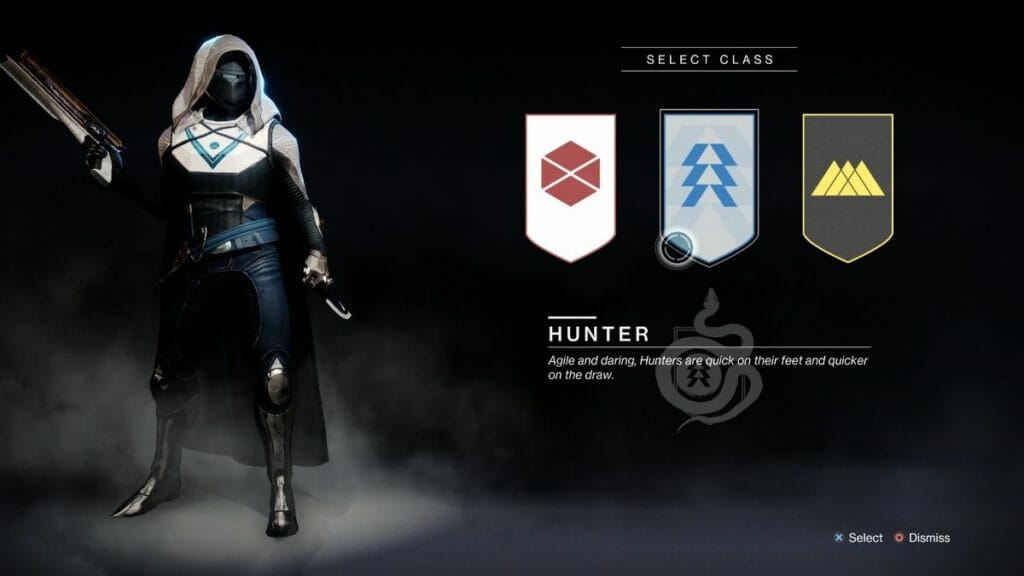
To begin our beginner’s guide Destiny 2 , let’s talk about classes.
When you first load the game, you’ll see a class selection screen. There are three options to choose from, each with different jumps, grenades, melee and class skills, and super powers. Super is essentially your ultimate power release after charging the screen for a while.
There are three classes available: Titans, hunters and wizards:
- Titans are the most aggressive class and act primarily as an operational barrier tank. This class is focused on attack and resistance, and with its skills it can contain enemies, protect allies, or perform powerful AOE attacks.
- and fighters are similar to DPS shooters. They have an advantage in dodge rolls, greater mobility, and more dodge or long-range super powers. This course encourages you to be strategic and nimble, balancing risk with long-term play.
- Wizards are essentially space wizards. They create source bursts that give attacks or health recovery buffs, and have the same mobility as fighters, but with improved hover and jump mechanisms. This class sits somewhere between the other two and allows you to rely more on your skills to capture or destroy enemies in a single move.
To help you decide which class to choose, read our Destiny 2 class guide for details on the specific skills and how to play each option. And don’t worry, if you want to try a different class, you can always start a new character. You can also transfer weapons and some armor from one character to another, making it much easier to level up.
Subclass
Image: Bungie via HGG
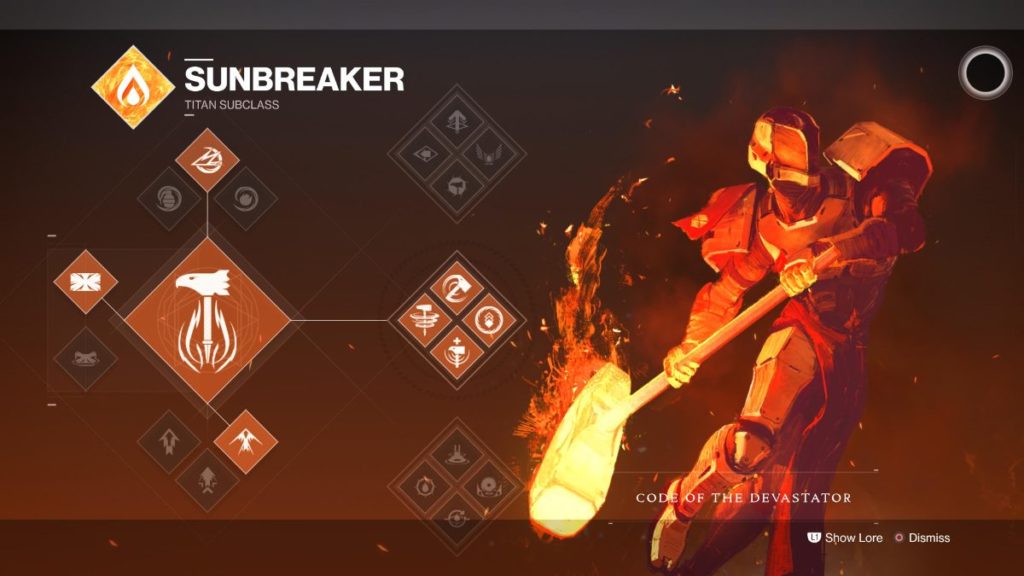
Elemental burns are everywhere in Destiny 2, but they have their beginnings as the basis for each subclass. These are item-specific skills that can be changed at any time through the inventory menu. You are currently in possession of an electric arc, a fiery saltpeter, an enveloping void, and an icy stasis.
Each option has a different set of grenades, melee skills, and super powers that can be selected through a simple three-level skill tree. The only unique option is Stasis, which doesn’t use skill trees like the others, but systems called aspects and fragments. These are essentially mods that affect the way your stasis abilities work and allow the developers to offer new options each season.
You start with a subclass and soon have the ability to upgrade it and unlock more features as you level up. Stasis requires you to complete missions with Exo Stranger in Europe and is connected to the Beyond Light expansion.
See our guides for each subclass of Titans, Mages and Hunters for more information.
Power level and seasonal level
Speaking of leveling, let’s talk about two unique leveling systems in Destiny 2.
Power level
Image: Bungie via HGG
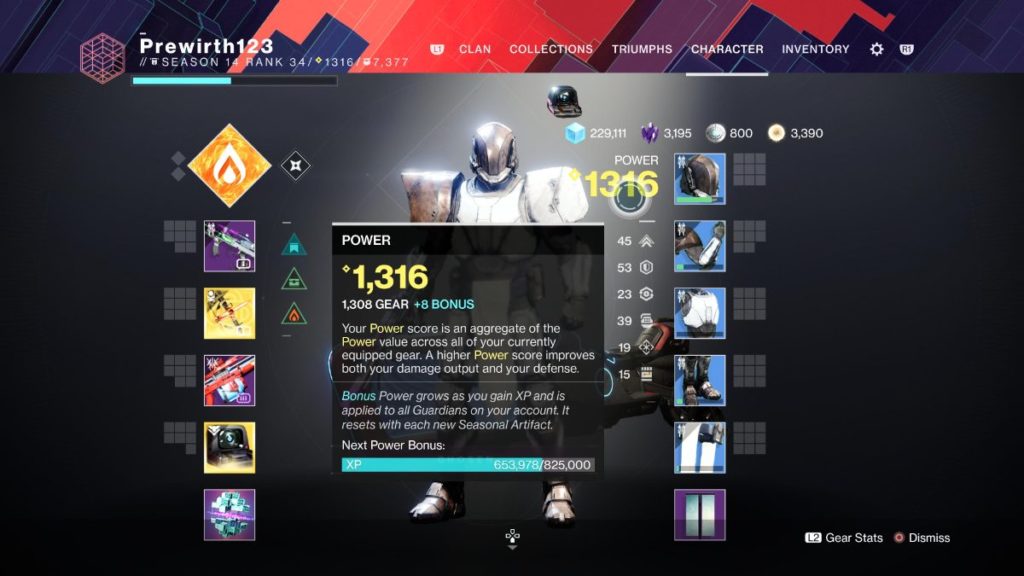
The next topic in our Destiny 2 beginner’s guide is your power level. This progression system is a basic statistic that increases your ability to successfully compete against stronger opponents. It is directly related to the average power levels of weapons and armor (the baseline of each weapon) and is displayed to the right of your character.
You will notice that for some game modes, such as. B. Strikes and Raids, a recommended strength level is given. You can still do this activity even if you are not at that level, but it will be a difficult time.
When you begin your journey with this Destiny 2 Beginner’s Guide, your power level will be set to 1100. So you can participate in different campaigns for each expansion, in regular game modes like Strikes, Crucible and Gambit, and also try Patrols. Your goal in this phase is to playfully unlock weapons and armor that have higher power levels at each location.
Finally you reach Soft Cap 1260, then Hard Cap 1310, Pinnacle Cap 1320 and finally Max Power 1330. Each level becomes increasingly difficult and only certain equipment and actions can unlock a higher level. In addition, the Pinnacle and Max Caps are increased by 10 per season.
Seasonal level
Image: Bungie via HGG
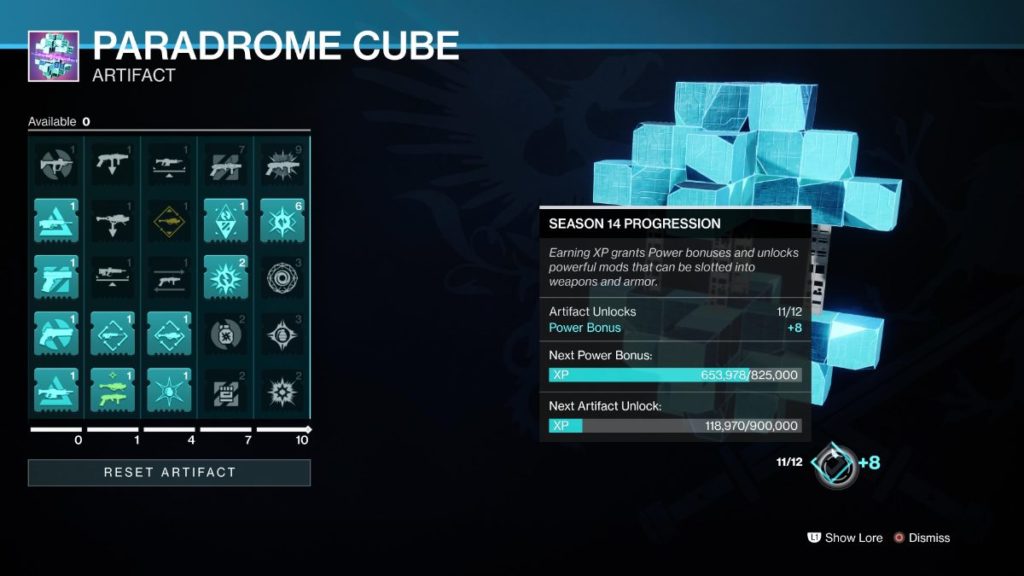
The other part of your Guard level increase is your seasonal level. Seasons in Destiny 2 are small chunks of content between major expansions, usually including a Season Pass, quests, new story content, a unique game type and other time-limited events. They are valid for two to three months, after which they are reset, and contain what is known as a seasonal artifact.
The artifact is a way to advance in a particular season, and you have to buy a season pass (which only costs $10) to get it. Unlocks unique seasonal armor modifications and 10 additional power levels active during the current season. Unlike the standard power level, you unlock this by collecting experience points and unlocking new slots on the artifact without using weapons or armor.
Where is the gearbox used?
As mentioned in our Destiny 2 Beginner’s Guide, to increase your power beyond a certain threshold, you must perform certain actions and obtain certain equipment.
To reach the Hard Cap, you must first obtain a powerful equipment or Pinnacle. Power items are usually associated with merchant rewards, certain playlist activities, seasonal activities, and premium engrams. To reach the Cape of the Pinnacle, you must have Pinnacle gear. This is an even narrower range of actions, such as. B. Nightly drops or performing actions in a playlist (e.g. 3 Strikes matches and 3 Crucible matches).
You can find out how to quickly increase your power levels by reading our Season of the Splicer power level upgrade guide.
Climbing, guard: Elaborate rarity grades
Image: Bungie via HGG
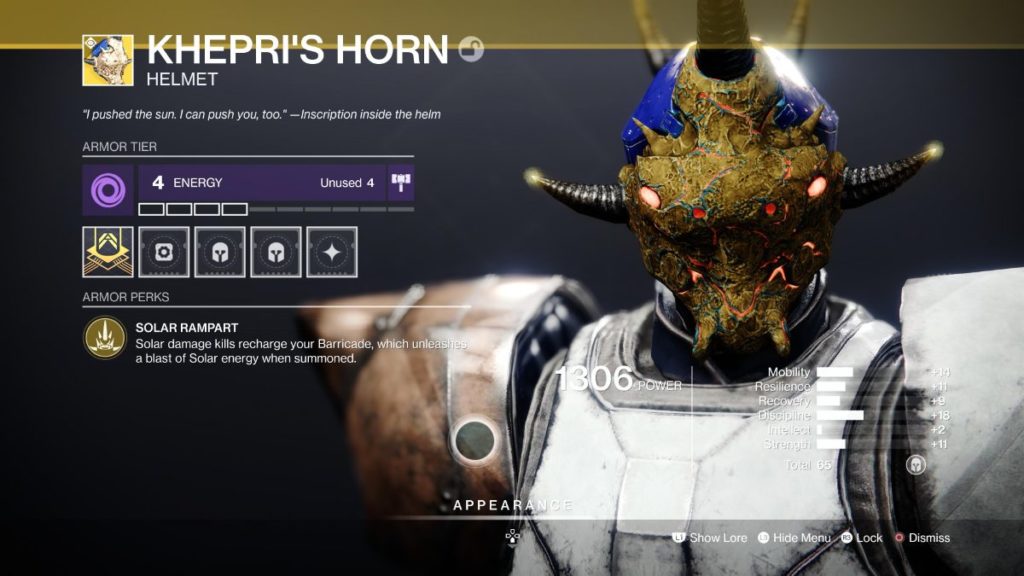
As you begin your journey and collect equipment as you complete missions and progress through the storyline, you’ll likely notice different colored items. This colour coding indicates the rarity and helps you to easily distinguish the different species. Here are five of them currently in play:
- General (white). This level is usually limited to armor for exclusive events and is usually meant to be upgraded. Don’t expect to find common gear just by playing.
- Unusual (green). Like the general level, this rarity is almost rare. You start doing this at the first mission, and it can become an armour upgrade level that you get at exclusive events, but that’s it.
- Rare (blue). These are the most common pieces of equipment you will encounter at the beginning of the game. You’re more likely to drop them when you’re in a slump or at the beginning of a new season. Rare equipment sometimes has one or two perks, and armor has two less modification slots. They can drop like legendary gear at higher energy levels, so save them for brewing (we explain this in the next section).
- Legendary (purple). Legendary gear is your best option to collect. They offer a wide range of perks, mod slots and stats that you can try to blow up. Depending on the weapon or armor you’re looking for, you can increase your chances by playing with a limited amount of loot in certain modes.
- Exotic (Gold). This is the rarest equipment type in Destiny 2. You can only equip one exotic weapon and one exotic armor at a time, as this is a very specific benefit. There are currently only a limited number of exotic equipment items in the game, and some are locked to certain tasks or expansions.
Read our guide to farming exotics to find out the best way to unlock exotics, and check out our ranking of exotics for Titans, Warlocks and Hunters to see what you need to get first.
Gearbox upgrades and modifications
The main components of Destiny 2 are weapon and armor upgrades and customizing your Guardian. These systems are essential to your ability to maximize your power, retain your weapons and armor, and look good. There’s a lot here, but that’s what our Beginner’s Guide Destiny 2 is for.
Everything needed for the upgrade and configuration is described here.
Materials
A combination of the following materials will be used in the redesign:
- Shimmer : Standard currency earned by defeating enemies, opening chests and completing quests.
- Legendary shards: General currency earned by completing quests or dismantling exotic or legendary equipment.
- Upgrade of modules: A rare currency used to replenish equipment. Get them from the armor by dismantling random armor or weapons, or buy them from the armor dealer.
- Enlargement nuclei: Rare coin used in the workshop. Obtained by unpacking level 4 equipment, completing certain tasks or buying merchants.
- Amplifier prisms: An incredibly rare coin used in the final stages of a masterpiece. Earn by completing high level quests in Nightfall, Empire Hunt or by buying goods from merchants.
- Ascendant Shards: Exotic currency used in the final stage of Mastery. Obtained by dismantling exotic items purchased from the arms dealer or by high-level night falls and other actions.
Weapon and armour settings
Matching weapons and armor is the process of combining equipment in a specific slot to increase its power. This process requires that the upgraded and the administered equipment be of the same type of weapon or armor and that the administered equipment have a higher energy level. You will also need an upgrade module to complete the process.
One note in this Destiny 2 beginner’s guide is that if you have dual gear but like the stats or benefits of the less powerful version, it’s not worth taking the upgrade module in that case.
Masterpieces
Image: Bungie via HGG
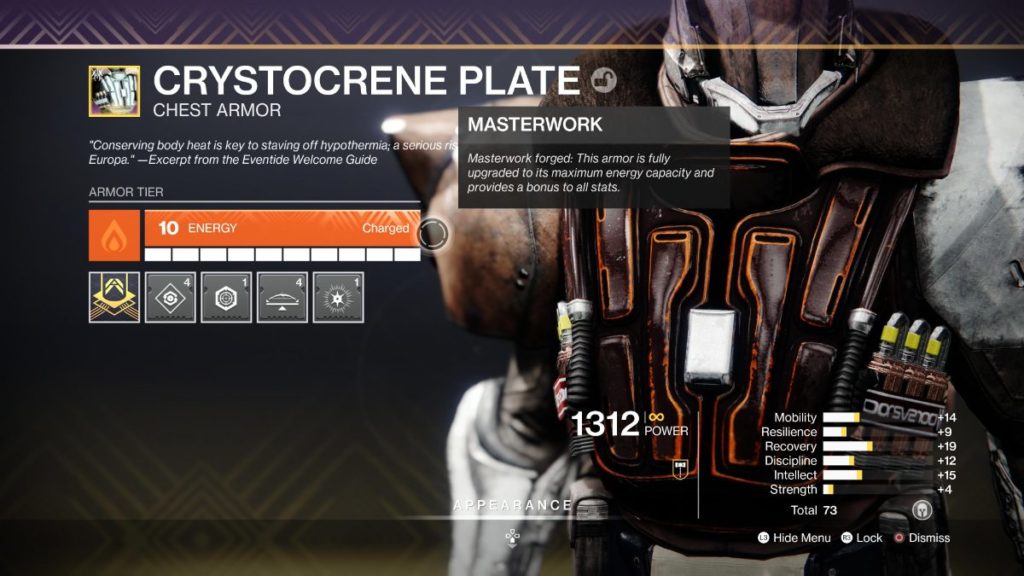
Besides strength level, mastery is another process you can use to improve your skills in Destiny 2. By doing so, you upgrade a piece of legendary equipment ten times or unlock a catalyst for an exotic weapon. This gives you benefits such as the creation of power spheres (which increases the cooldown of the super), +10 to stats and other general benefits.
You can create skill items directly in your inventory by clicking on a weapon or armor and selecting the current level. To reach level 10, you need mirrors, legendary shards, reinforcement cores, reinforcement prisms and ascension shards. Exotic catalysts are either unlocked randomly or by certain actions, depending on the exotic weapon.
Read our full guide on Gear Mastering in Destiny 2 to simplify the upgrade process.
Slide
Image: Bungie via HGG
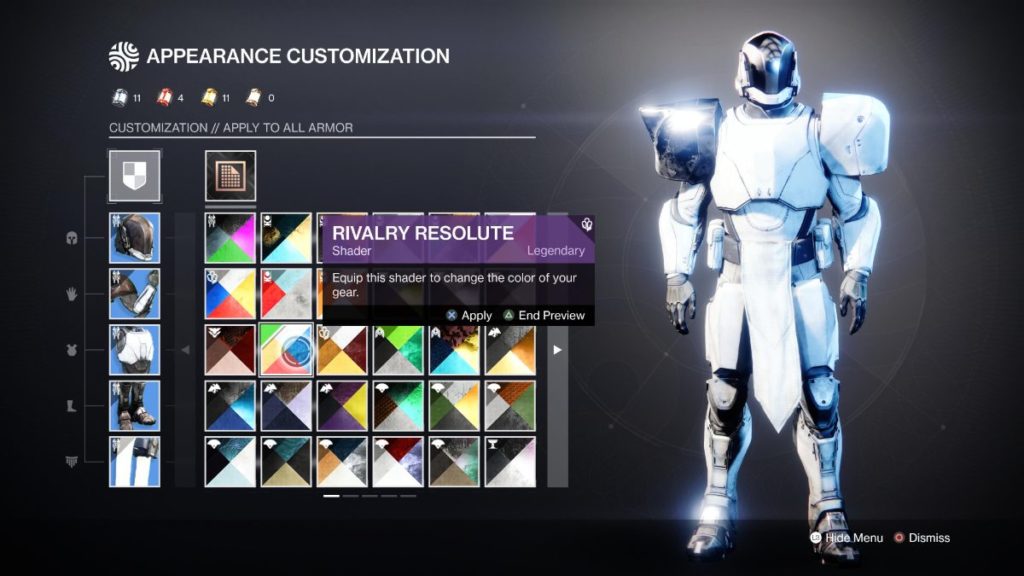
Shaders are simply color changes that can be applied to armor and weapons. They may not be as important to the game as some of the other topics in our Destiny 2beginner’s guide, but they’re still an essential part of the game’s charm.
Shaders are permanent unlocks obtained randomly in the game Destiny 2, although some shaders can be purchased or unlocked via certain achievements. Applying a shader costs 500 mica, applying it entirely to the armor costs 2500.
This can be done for each piece of armor or weapon individually or through the new upgrade menu at the bottom of the inventory.
Overview of armour and ornaments
Image: Bungie via HGG
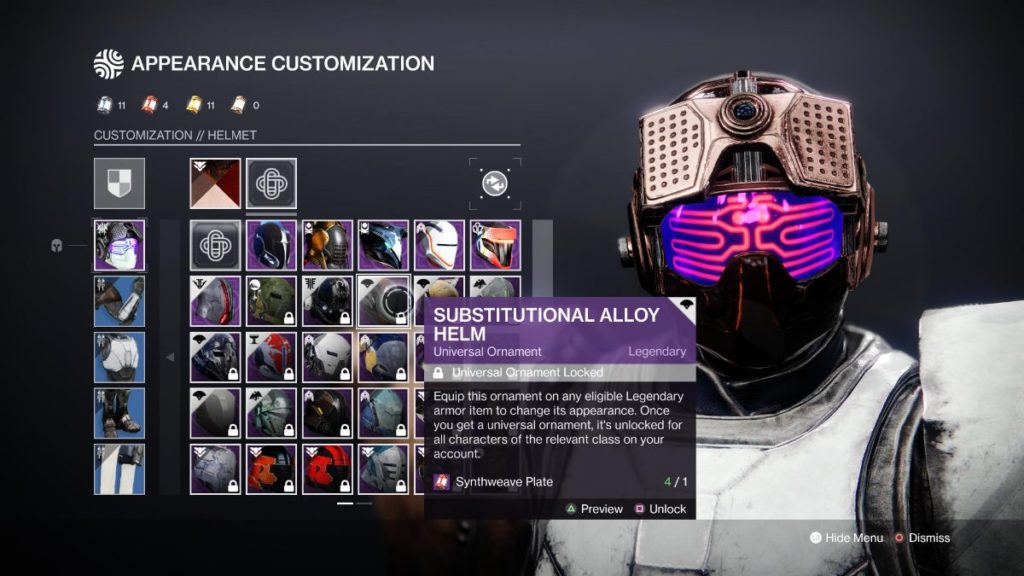
Armour Synthesis is a new system that allows you to turn armour pieces into decorations or skins. This process, called transmog, means that you can now change your appearance at will without having to change equipment or sacrifice power levels. Some trinkets you can only buy, but everything you earn in the game can now be turned into trinkets by completing a long series of quests.
Learn all about the new armour synthesis process in our comprehensive transmog guide.
Armour and weapons
There are many stats and gadgets that make up your armor and weapons. Here are some basics to get you started.
Weapon types
Let’s talk a little about what to expect from the fight. The first-person shooter mechanics are familiar to anyone who has played Bungie’s games, but the weapon types and ammunition are distinctly different. This is what we should expect:
Kinetic weapons
Image: Bungie via HGG
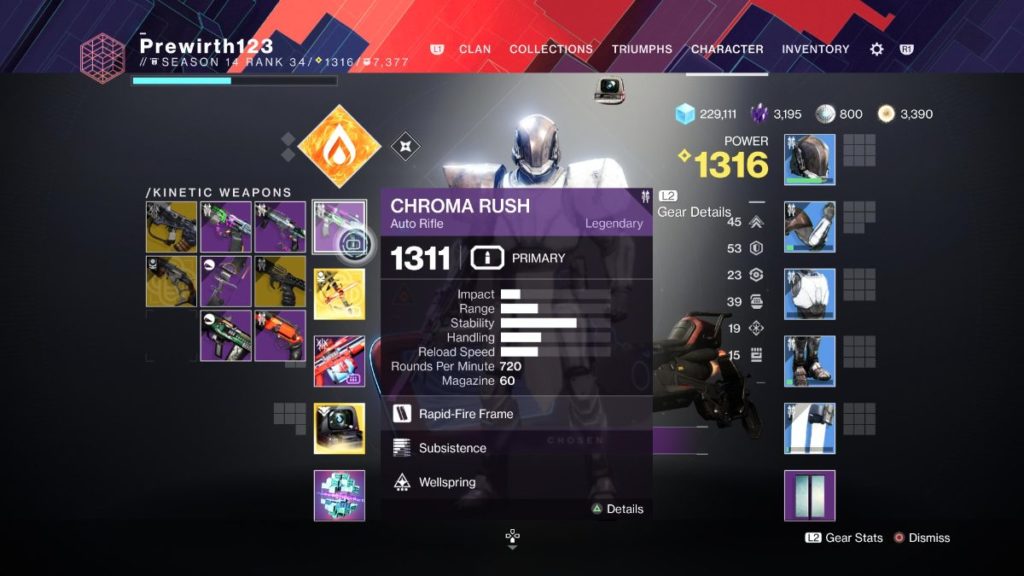
Your first place in the inventory. Includes assault rifles, pulse rifles, handguns, reconnaissance rifles and some shotguns, bows and other random weapons. This weapon has no elemental upgrade, extra ammo, less damage and can be topped up with white ammo bricks.
Energy weapon
Image: Bungie via HGG
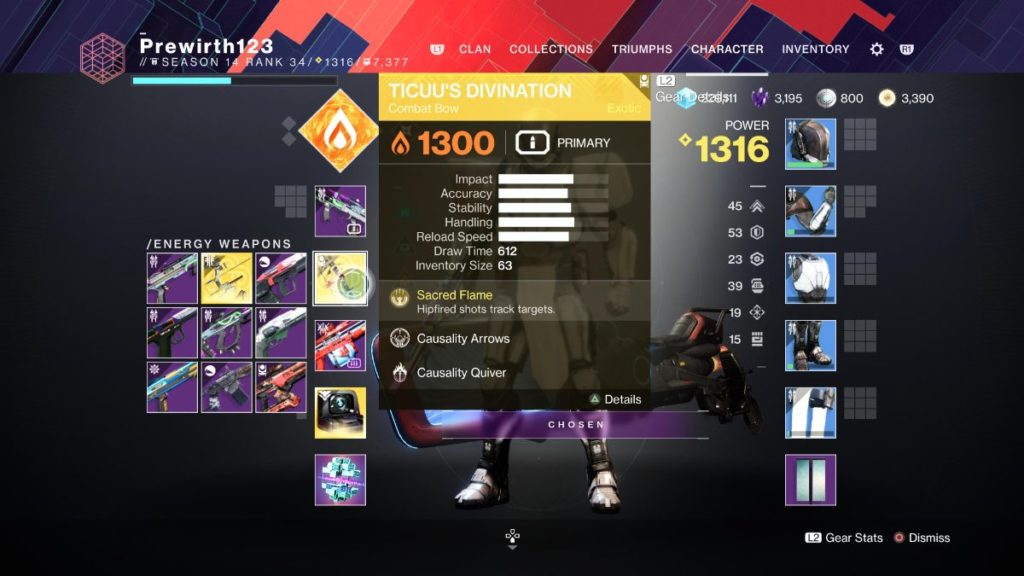
Your average stock location. Includes shotguns, sniper rifles, fusion rifles and random variations of other weapons. This weapon has elemental fire, deals more damage, has less ammunition, and can be reloaded with green ammo bricks.
Energy weapon
Image: Bungie via HGG
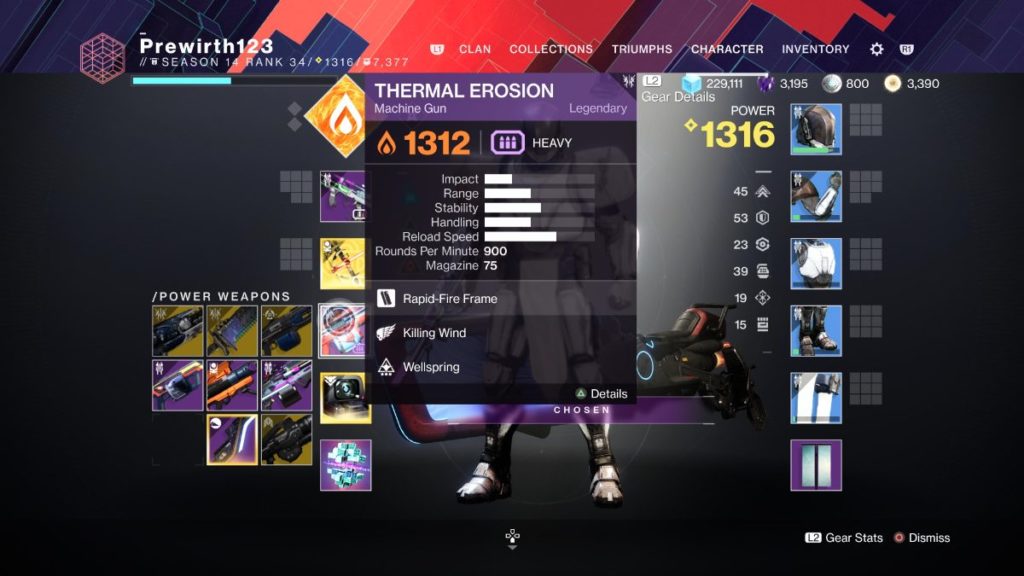
Your average stock location. Includes machine guns, rocket launchers, grenade launchers, line fusion rifles and swords. This weapon has an elemental burn, does massive damage with an extremely small amount of ammo, and can be reloaded with purple ammo.
Weapons statistics
Here are the various statistics that affect the performance of your harness. They directly affect the regeneration of health, shields and abilities.
- Sustainability: The amount of damage resistance your armor provides.
- Restoration: How quickly you return to health after being injured.
- Mobility: Jump height and walking speed.
- Information: The speed at which your super recharges itself.
- Study area: The speed at which your grenade reloads.
- Strength: The reloading rate of a weapon.
Check out our armour stats guide to find out how to get high stats armour.
Weapons Statistics
Here are the various indicators that affect the performance of your gun. They directly affect your accuracy, range and speed.
- Impact: How much damage does the weapon do?
- Range: The distance you can shoot at a target before damage is reduced.
- Stability: The stability of the weapon when the trigger is pulled.
- Treatment: The speed with which you can change or store weapons.
- Recharge rate: The speed at which you charge a charger.
There are also hidden weapon statistics that are only accessible through third-party applications. Read our guide to firearms statistics for more information.
Armour and weapon modifications
Armour and weapon mods are unique additions that you can unlock and add to your equipment. There are up to five slots for each piece of armor, which can be unlocked through the equipment workshop. These are specific types of mods. So you are limited to a certain selection and a total amount of energy.
Weapon changes are limited to one per weapon. They are much more limited than the armor mods, and the only truly advanced option is the Adept mods. They also have weapon bonuses, random bonuses applied to a specific weapon.
These are pretty complex systems that really become more important when you start playing Night Falls, Dungeons and Raids. For more information, read our guides on armor modifications, weapon modifications, and weapon benefits.
Game modes
There is a lot to do in the region Destiny 2. Here are the main game modes you will participate in.
Patrols and lost sectors
Short missions and location-specific secret places in Destiny 2. Both can be found randomly by walking around the world, but some lost areas can also be played on a higher difficulty level from your map.
Strike
Image: Bungie via HGG
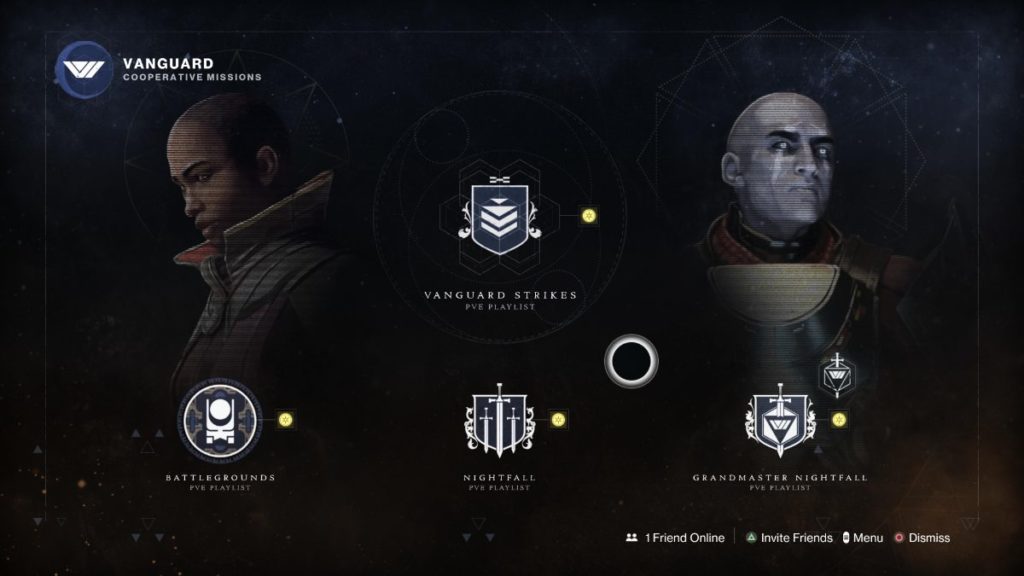
Vanguard missions or strikes bring a team of three together to complete a themed mission lasting 15 to 20 minutes. Mostly it involves waves of enemies and a boss fight. They can be accessed at specific locations on the map or through the strike playlist. There is no player selection in the higher difficulty levels. When it comes to learning to play Destiny 2, it’s your bread and butter to level up.
Crucible
Image: Bungie via HGG
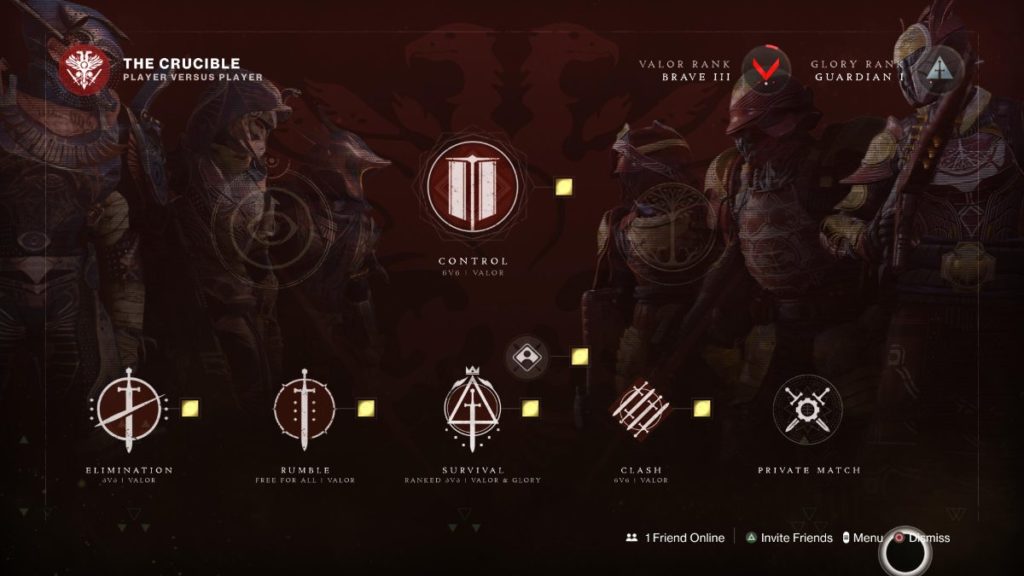
PvP mode in Destiny 2. There are currently 4v4, 6v6 and Free-for-All modes with unique rotations each week. The game also includes a competitive mode, Trials of Osiris, a 3v3 mode available only on weekends, and Iron Banner, which provides exclusive Pinnacle Gear rewards.
Gambit
Image: Bungie via HGG
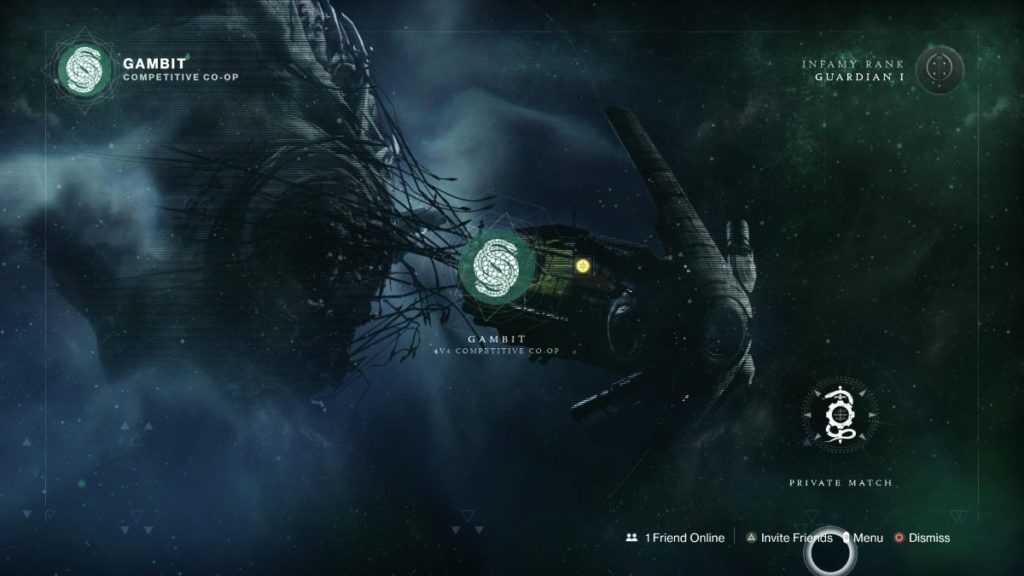
In this PvE plus PvP mode, two teams of four must collect moths as quickly as possible to summon the final boss and defeat him first. You can also send extra opponents to the other team and even invade their arena to put them out of action.
Nightfall : Analysis
A more complex version of the Strokes, with a larger number of stronger opponents. They have unique weakening spells, limited opportunities to participate in battles, and require you to play at a certain power level.
Dungeons
Smaller iterations of raids that work more like strikes, but with the puzzle space mechanics of a raid. These three games are challenging, both in terms of mechanics and opponents.
Attacking
Image: Bungie via HGG
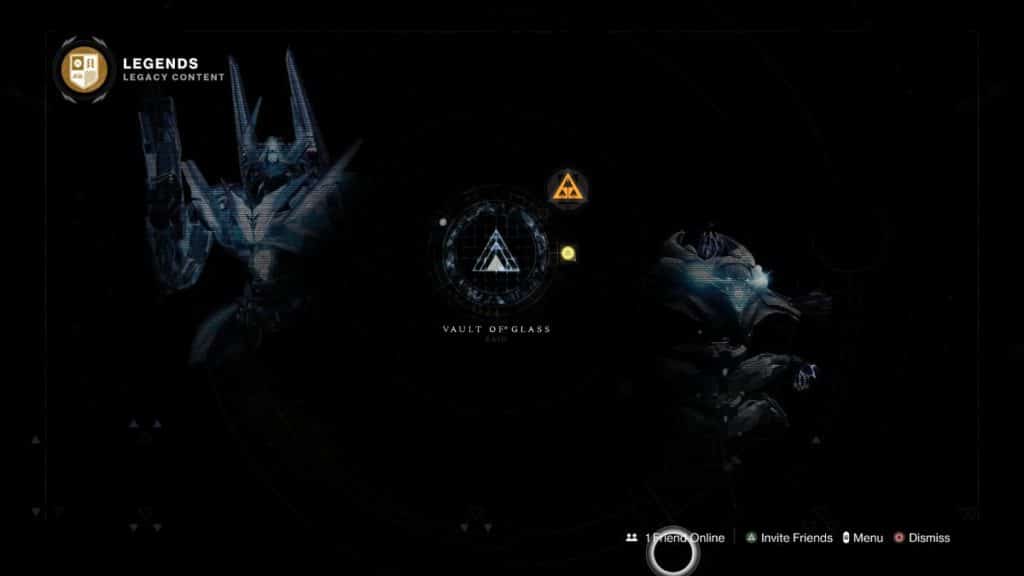
A great show in which the six guardians go through a deadly trap full of riddles together for several hours. These are the most difficult actions in Destiny 2, and they require a lot of patience, optimized guard builds, and clear communication.
Complete a raid and receive a variety of gear, exclusive rewards and the ability to try more challenging versions of each raid as soon as they are released. If you passed this course, you can be sure that you passed this Destiny 2 Beginner’s Guide .
Suppliers and missions
Image: Bungie via HGG
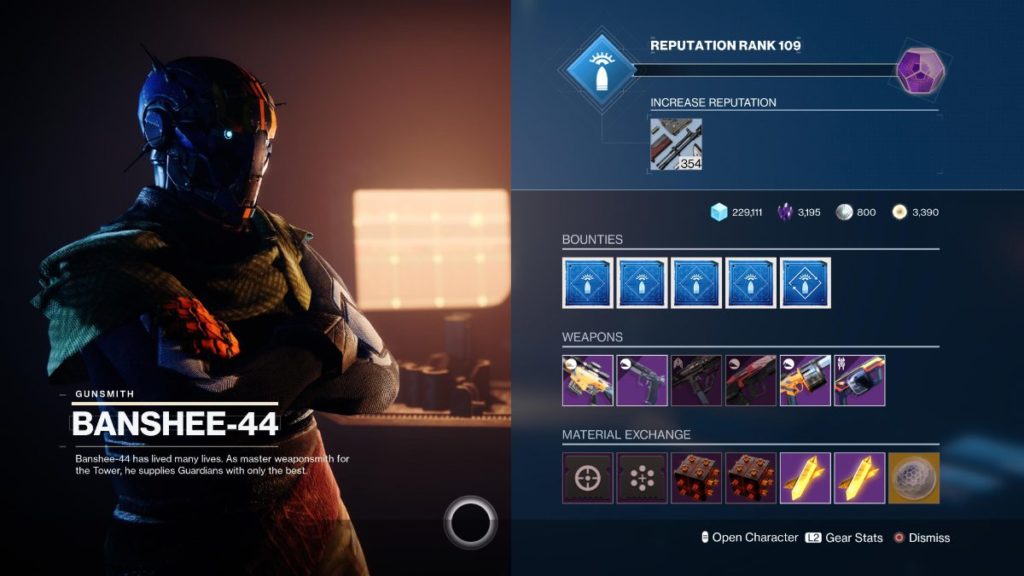
The emphasis of Destiny 2 is on missions and quests. The larger narrative episodes of expansions like Beyond Light are called narrative missions. Seasonal, minor and exotic quests are marked as special quests, which you can sort according to certain designations in the quest log. Finally, there are the bonuses you receive from passing traders.
There are now many merchants in Destiny 2, and more are added each season. But in this Beginner’s Guide Destiny 2 , we will only focus on the basic NPCs.
- Fixed. Offers advanced rewards and addictive quests. Earn powerful items by completing 8 tasks each week.
- Lord Shaxx. Gives rewards and quests for the Crucible. Earn powerful items by completing 8 tasks each week.
- Drifter. Gives rewards and tasks for Gambit. Earn powerful items by completing 8 tasks each week.
- Banshee-44. Weapon quests, weapon quests, mods and resources. Earn powerful items by completing 8 tasks each week.
- Xur. Sells exotic weapons and armor, exotic engrams and raw materials on weekends. Use this resource to find them.
- Exo Stranger. Exclusively from Beyond Light. Unlocking aspects and fragments of stagnation and core tasks in history
- Ada-1. Gives rewards for armour synthesis, mods and armour sets.
- Seasonal suppliers. New seasonal NPCs in Destiny 2. They will offer unique upgrade mechanisms, seasonal rewards and mods.
- Planetary salesman. Lots of location-specific NPCs in Destiny 2. They offer planet-specific rewards and resources.
- Quest Kiosk. Restore all lost or accidentally lost quest lines and a way for existing players to access a new training mission.
- Postmaster. Where all the items you have won end up if you have not collected them or if your inventory is full.
There’s a lot to do in the Destiny 2area, and it can be a bit overwhelming when you’re first starting out. We hope this Destiny 2 Beginner’s Guide has helped you accelerate your experience and that you’re on the right track to maximize your power level and develop your equipment collection. Share this article on your favorite social media platforms to keep everyone you know informed, and sign up for our newsletter to receive the latest news about Destiny 2.
Have fun playing!{“@context”:”https://schema.org”,”@type”:”FAQPage”,”mainEntity”:[{“@type”:”Question”,”name”:”What should I do first in Destiny 2 2021?”,”acceptedAnswer”:{“@type”:”Answer”,”text”:” Destiny 2 2021 is a game that has not been released yet.”}},{“@type”:”Question”,”name”:”What do new players do in Destiny 2 2021?”,”acceptedAnswer”:{“@type”:”Answer”,”text”:” New players in Destiny 2 2021 will start off with a character that is level 1 and have access to the first mission.”}},{“@type”:”Question”,”name”:”What should a beginner do in Destiny 2?”,”acceptedAnswer”:{“@type”:”Answer”,”text”:” The first thing you should do is to find a group of people to play with. This will help you learn the game and get better at it.”}}]}
Frequently Asked Questions
What should I do first in Destiny 2 2021?
Destiny 2 2021 is a game that has not been released yet.
What do new players do in Destiny 2 2021?
New players in Destiny 2 2021 will start off with a character that is level 1 and have access to the first mission.
What should a beginner do in Destiny 2?
The first thing you should do is to find a group of people to play with. This will help you learn the game and get better at it.
Related Tags:
Feedback,destiny 2 beginner’s guide 2021destiny 2 new player guide 2021destiny beginner guide 2021destiny 2 tips and tricks 2021destiny 2 guide 2021destiny 2 beginner’s guide beyond light,People also search for,Privacy settings,How Search works,destiny 2 beginner’s guide 2021,destiny 2 new player guide 2021,destiny beginner guide 2021,destiny 2 tips and tricks 2021,destiny 2 guide 2021,destiny 2 beginner’s guide beyond light,destiny 2 new player guide beyond light,destiny 2 new light 2021

